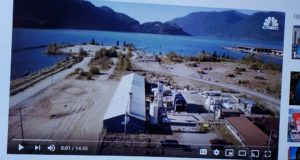(this first appeared at Clearhead.me)
Earlier this year I ran across a great quote from Michael Perman in Innovation Leader Magazine in which he defined innovation as “the ability to perceive alternative realities and the courage to move toward those visions”.
Perman is the former Senior Director of Global Innovation (“Dean of Innovation”) at Gap Inc., and a former executive with Levi Strauss & Co. Based on his background, and that singular vision of innovation, I wanted to uncover how this definition of innovation aligns with building real products in the real world.
Unlike Steve Jobs, who infamously said “The customer never knows what they want until we show them”, Clearhead believes that data most certainly informs how you create products and test them. Our Clearhead Accelerator practice does exactly that for product teams in the Fortune 500.
So how can you use data to inform these alternate realities? I sat down to interview Perman on these topics.
When testing and building a product, what’s the most important thing to concentrate on?
Innovation is the ability to perceive alternative realities and the courage to move toward those visions. So, establishing the current state and then developing alternative realities to that state is the most important thing to concentrate on. Uber is an alternative to the reality of a generally unpleasant experience of riding in a taxi. Airbnb is an alternative to the reality of restrictive definitions of what a hotel room actually is. Start by defining alternatives to your reality or the reality of your customers.
Insights and foresights are really important first steps in the product development process. Identify the customer problem you’re trying to solve and devote some time to clarifying that. Sometimes the problem is actually a symptom of something deeper.
Identify the customer problem you’re trying to solve and devote some time to clarifying that. Sometimes the problem is actually a symptom of something deeper.
In one instance at Gap, we were developing new ideas for women’s sports. She stated she wanted performance, of course. Through insights and observation, we also realized what she really needed was a convenient and interchangeable system of work-out gear. So, we created a set of eight essentials including a cool bag.
It’s also important to see what’s coming using foresights. Pattern recognition skills can inform you early about sports and activities that are likely to catch on. For example, paddle boarding was first a gimmick and then it caught on and grew fast. It’s like surfing calm waters and using new muscles. So, developing specific products for that market was a big win.
When you’re building a new product, it’s important to stay open to what the product might become, not just what it is today. You might be pleasantly surprised by what you learn.
When testing and building a product, what’s the biggest mistake people make?
People forget to co-create and neglect to access the global ecosystem of ideas. Just about anything you can conceive represents only a fraction of what it might become. Constant co-creation is key– with customers and also with manufacturers of raw materials who often have a broader view of global markets and ideas. At Gap, our producers at the fiber and mill level were helpful collaborators. But, the other mistake people make is not providing a really clear brief. Without a brief, you’ll end up with excellent executions of an undefined strategy.
When launching a product, what’s the key to a solid go-to-market strategy?
First, you need a thoughtful creative brief that’s based on insights for designers to create your brand/product aesthetic. It’s important to consider the total customer experience. What are the emotions you want to convey that will lead to product loyalty, endorsement and repeat purchase? The product itself is only one aspect of what you are selling.
When I helped launch the new women’s business at Levi’s, we built a women’s community and developed engagement events with Sundance, TED and Art Basel. That helped us establish better relationships with potential customers – beyond selling the product.
Also, consider what the pipeline might become before you introduce your first product. There’s likely derivations of your product that are too far ahead of the market, but you can bring the market along if you plan a future pipeline and then evolve as you go forward by listening to the marketplace.
What would be the top three things you would want entrepreneurs and intreprenuers to know before launching their product?
1) Develop alternative scenarios about where the market is heading, not just where it is today. Establish what alternative reality means to your customer. Leverage insights to do this. Co-create to evolve ideas.
2) Consider the total customer experience and the emotional engagement you’re trying to convey. Establish and launch unique experiences that are aligned with the core product messages.
3) Plan your pipeline in advance. Develop prototypes for the most extreme version of your product and then back-off from there.
When you build products are you thinking through how data informs it? That’s exactly what the Clearhead Accelerator practice does every day for our clients. Reach out to learn more.
 501derful.org
501derful.org




